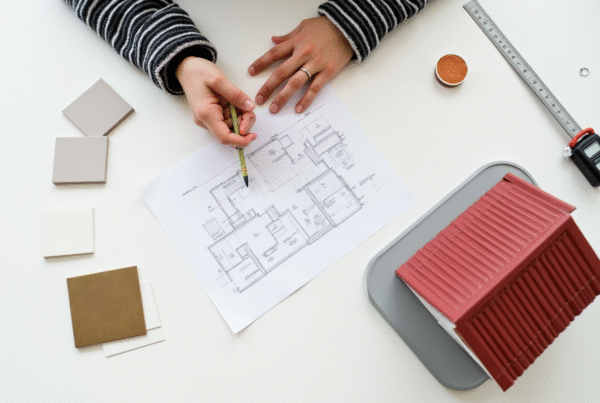Managing architectural changes within a Homeowners Association (HOA) or Condominium Owners Association (COA) is no small feat. It demands meticulous organization to ensure proposed changes meet safety standards, align with association bylaws, and maintain community harmony. As an association manager, you’re at the heart of this process, balancing homeowner aspirations with the collective good. This guide explores best practices, offers practical tips, and provides an HOA architectural review checklist to streamline the process—making it smoother for you, the board, and homeowners alike.
The HOA Board’s Role in Architectural Guidelines
Architectural guidelines (also called design standards) define an HOA’s rules for property improvements, covering aesthetics, landscaping, structural changes, and more. These policies ensure that modifications enhance the community’s beauty, safety, and value.
As an association manager, you work closely with the HOA board to enforce these standards. Together, you review homeowner proposals, assessing safety, compatibility with neighborhood aesthetics, and compliance with local building codes. Many HOAs consult architects or experts to craft robust guidelines and evaluate submissions, ensuring decisions are fair and informed.
This process is pivotal—it can strengthen or strain homeowner-board relationships. Your role as a manager is to foster transparency, fairness, and clear communication, building trust across the community.
What Goes Into an Architectural Change Request?
A well-prepared architectural change request sets the stage for a smooth review. As a manager, you guide homeowners on what to include, ensuring proposals align with HOA standards. While specifics vary by association, here are the essentials:
Adherence to Architectural Guidelines
Homeowners must familiarize themselves with the HOA’s guidelines before submitting a proposal. This saves time and reduces revisions or rejections. Common guidelines include:
- All exterior changes require HOA approval before construction.
- Proposals must comply with local building codes and regulations.
- Detailed plans and specifications are mandatory.
- Changes must enhance or maintain community aesthetics and value.
- Contractors must be licensed and insured.
- Homeowners are responsible for permits and ongoing maintenance.
- Modifications affecting neighboring properties need board review.
- Non-compliant changes must be removed at the homeowner’s expense.
These guidelines should be easily accessible—ideally online via a homeowner portal, in addition to being included in closing or welcome packets.
Parameters of the Change
Most HOAs use a standardized request form detailing:
- Type of work (e.g., deck addition, exterior painting).
- Project timeline.
- Materials to be used.
- Estimated costs.
Standardized forms ensure consistency and fairness. Make blank forms available online, via email, or in print to accommodate all homeowners.
Supporting Documentation
Request additional documents like construction plans, permits, or contractor quotes to verify feasibility and safety. A centralized platform—such as a cloud drive or association management software—simplifies submission and storage.
Clear Expectations
Set the tone early: homeowners should communicate openly, respond to questions, and be flexible with adjustments. Likewise, you and the board must respect their timelines and constraints. Transparency and patience from both sides keep the process collaborative.
HOA Architectural Review Checklist for Managers
Whether you’re a seasoned manager or new to HOAs, this step-by-step checklist ensures a thorough architectural review process:
- Form an Architectural Review Committee (ARC)
Establish an ARC to evaluate proposals, including board members or delegated experts (e.g., those with architecture or legal backgrounds). This adds diverse perspectives but requires careful coordination. - Review the Proposal
Scrutinize the submission for compliance with HOA guidelines, focusing on safety, aesthetics, and local codes. Consider consulting an architect or engineer for complex projects to ensure sound decision-making. - Assess Property Value Impact
Evaluate how the change affects community property values. Will it enhance the neighborhood’s appeal or clash with its character? Balance homeowner creativity with HOA standards to maintain cohesion. - Check Workmanship Quality
Confirm the contractor’s credentials—licensing, insurance, and expertise. Review quotes and plans to ensure the work meets professional standards. - Verify Permits and Approvals
Ensure all required permits (building, zoning, etc.) are in place. If unsure about compliance, consult a legal expert to avoid risks. - Consider Maintenance Needs
Assess the long-term upkeep of the proposed change. Avoid approving features—like elaborate water fixtures—that burden the homeowner or HOA with excessive maintenance. - Communicate Clearly
Keep homeowners informed at every stage. If revisions are needed, explain why, citing guidelines or expert input. Clear, constructive feedback builds trust and keeps the process moving.
Tips for a Frictionless Review Process
Balancing individual homeowner desires with community standards is tricky. These tips help you streamline the process while fostering goodwill:
- Centralize Communication
Use a single channel—like a homeowner portal, email, or newsletter—for updates, forms, and guidelines. A dedicated platform reduces confusion and ensures everyone’s on the same page. - Streamline Operations
Set clear review timelines and provide detailed instructions for submissions. Use association management software to track proposals, store documents, and share updates effortlessly. Tools like these keep records organized and accessible, saving time for all parties. - Stay Consistent
Apply guidelines uniformly to every proposal. Consistency upholds fairness and protects the board’s credibility, even when cases differ in complexity. - Encourage Collaboration
Stay engaged with homeowners throughout the process. Share objective criteria for decisions and invite revisions that align with guidelines. Help owners find cost-effective solutions that meet standards, showing you’re invested in their goals while safeguarding community value. - Focus on Shared Goals
Remind homeowners that architectural changes aim to improve their quality of life—a goal the HOA shares. Framing the process as a partnership fosters cooperation and keeps discussions constructive.
Why It Matters: Building Stronger Communities
Managing HOA architectural changes is about more than rules—it’s about creating safe, attractive, and cohesive neighborhoods. By following clear guidelines, communicating effectively, and prioritizing long-term impact, association managers can turn a complex process into a community win.
With the right tools and approach, you can ensure every change enhances the neighborhood while keeping homeowners happy.




